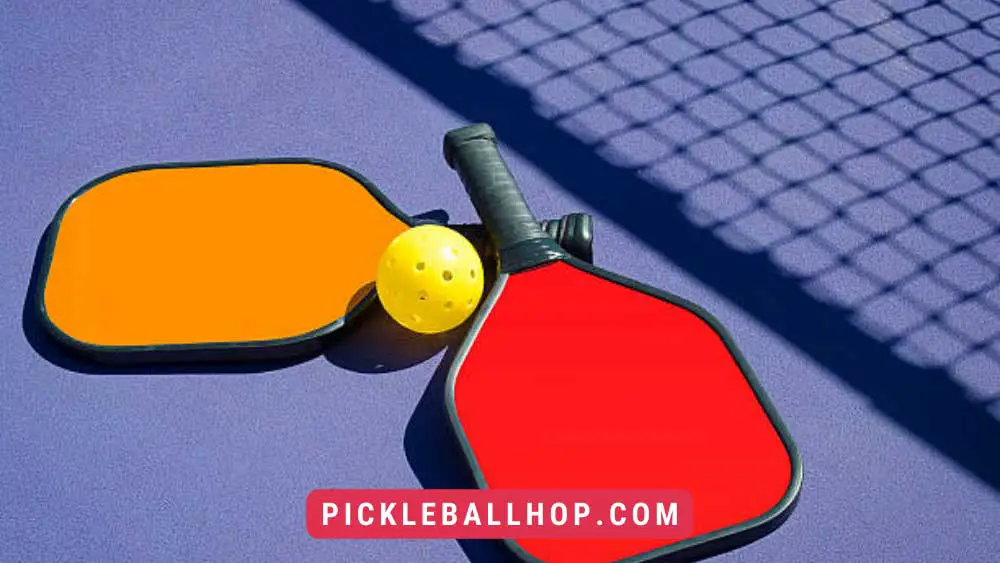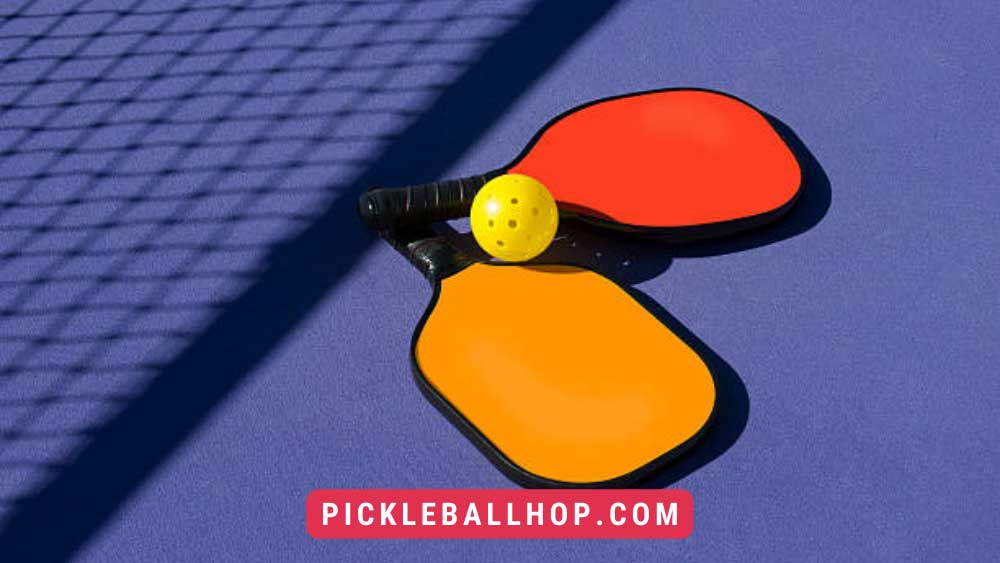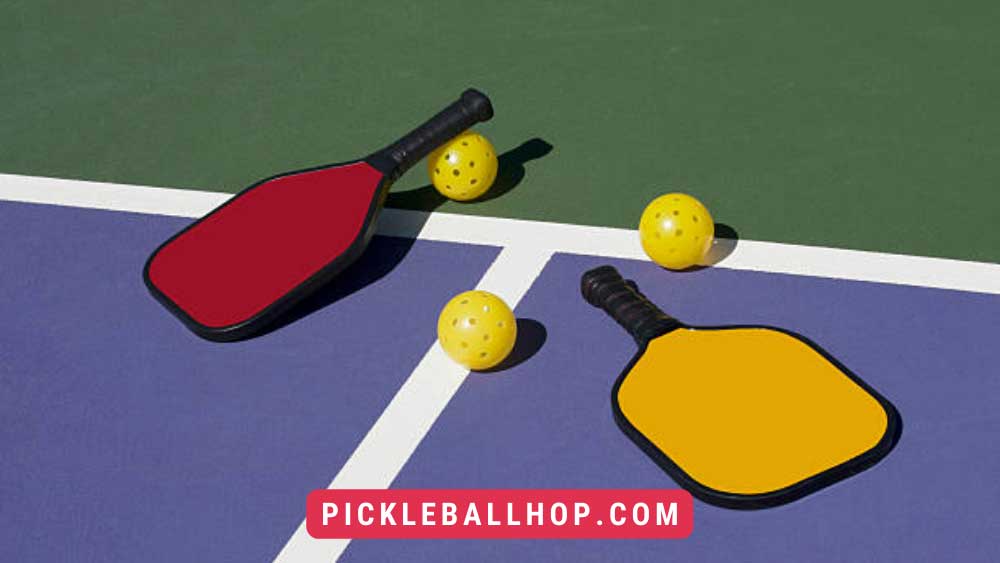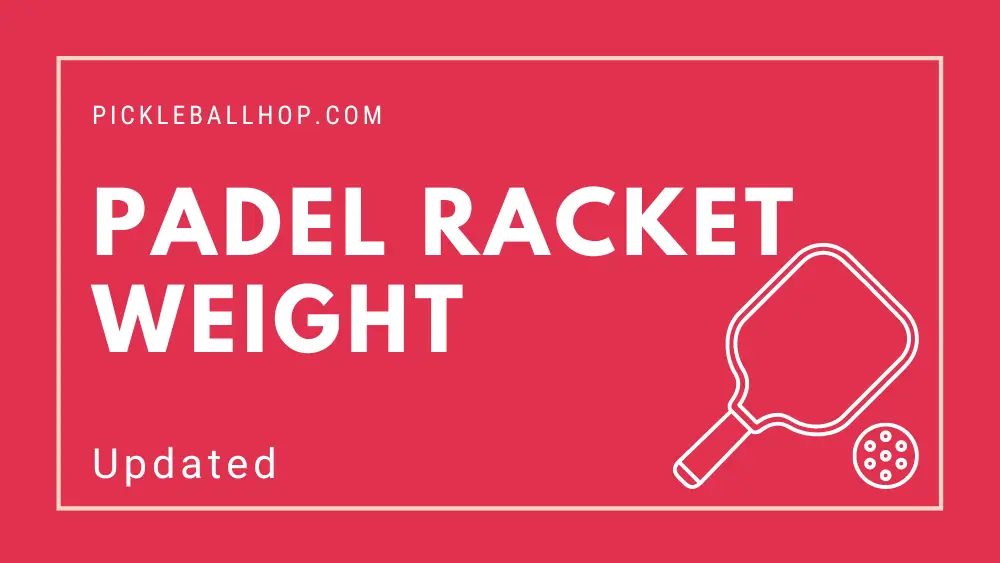Pickleball paddles are one of the most important parts of the game, and they have evolved so much over the years. As pickleball evolved, so did the way we looked at paddles. The first paddles were made of wood. Their durability and robustness have been enhanced, but they have also been made versatile and simple enough for novice users. Is it possible or recommended to add texture to it, and if so, how should you do it? You can also read how to choose a pickleball paddle by clicking here.
It is possible to increase the weight, power, stability, and grip of a paddle by adding lead tape to its sides and corners. Your paddle can have textures on its handle and frame (edge guard). Changes to its surface’s texture may only be made if they do not affect its roughness.
The texture of a pickleball paddle must adhere to strict rules. There should be no reflection on your paddle. According to the standards of the USA Pickleball Association, it should be made of rigid, non-compressible materials, with very precise surface roughness. How can you apply surface textures to your pickleball paddle? Let’s take a look.
Adding Textures To The Paddle
 You can buy pickleball paddles in most stores that already meet US Pickleball Association standards. They can compete legally in a tournament because they have the appropriate materials and textures. To find the right paddle for your needs, it is recommended that you do a little bit of shopping around until you find one that fits your needs.
You can buy pickleball paddles in most stores that already meet US Pickleball Association standards. They can compete legally in a tournament because they have the appropriate materials and textures. To find the right paddle for your needs, it is recommended that you do a little bit of shopping around until you find one that fits your needs.
In the event that you wish to modify your paddle, there are only a few options available to you. When textures are added to the paddle correctly, they can increase hand speed and stability, make maneuvering faster, and enhance grip.
The Butt Of The Paddle
There is a lot of weight to lead tape. A paddle’s handle or butt can be enhanced with lead tape to increase hand speed and improve grip and stability. The paddle can then be maneuvered more easily as a result. In the kitchen or on the no-volley zone line, the paddle can be quickly turned and exchanged by hand.
Start at the bottom and work your way up the paddle handle or butt by wrapping lead tape in spirals. When playing, make sure the lead tape does not get too slippery. Additionally, a special tape is included for pickleball paddles, which adds weight and reduces handle slippage.
Adding Weight To The Paddle Frame
In addition to adding weight to the paddle, you can also add weight to the handle by using lead tape. Right at four or five o’clock, and left at seven or eight o’clock, should be in the right corner of the frame. As a result, the paddle will become heavier without becoming immobile.
In addition to adding strength and stability, the lead tape can also increase energy transfer. It is added to the frame at the top right-hand corner of the frame at about ten o’clock as well as the top left-hand corner of the frame at about two o’clock.
As a result, you will be able to swing the paddle harder and generate more power when striking the ball. You can use this method to make your paddle a bit heavier. This method is often used by professional pickleball players. As a result of the paddle’s added stability, you will be able to defend against power swings from your opponent.
How To Set Up Your Paddle
A paddle can be made heavier by covering the lead tape with electrical tape. The weight can be added to your paddle incrementally to find out where the added weight will be most effective. You can easily remove the added weight from the paddle if you don’t want it there.
The center sides of the paddle can also be taped with lead. Torsion and twist are reduced as a result.
As an added feature, you can customize the paddle’s frame and handle with whatever color of electrical tape you prefer, making it look and feel even more unique.
You may enjoy reading: Pickleball Grips Explained
What Are The Paddle Specifications?
 The USAPA [USA Pickleball Association] approves paddles when playing pickleball tournaments, so make sure you play with one. Keeping the sport fair, fast-paced, and fun is the goal of the specifications allowed by the USAPA regulations.
The USAPA [USA Pickleball Association] approves paddles when playing pickleball tournaments, so make sure you play with one. Keeping the sport fair, fast-paced, and fun is the goal of the specifications allowed by the USAPA regulations.
Materials
Suitable materials include rigid, non-compressible, and non-deformable materials. Nomex, wood, polymer, and aluminum are acceptable materials for the paddle’s core.
A variety of materials can be used for the paddle’s surface, including wood, graphite, polycarbonate, and composites.
Surface Roughness
In order for the paddle’s hitting surface to be effective, there should be no holes, indentations, rough textures, or any features that will cause the ball to spin excessively or have additional spin when struck. Regulations and rules of USAPA and IFP (International Federation of Pickleball) prohibit these surface textures.
An SR 100 Surface Roughness Tester is used to determine the surface roughness and friction of the paddle. Disqualification will be given to any paddle that does not comply with the standards.
Reflection
Similarly, the paddle specifications cannot negatively influence the game in any way, nor can the paddle surface be reflective. Players are prohibited from using paddles if they adversely affect their opponents’ vision.
Depiction
In order for the paddle to be in good taste, any alterations made to it must always be tasteful. It should be impossible for anyone to take offense to what is written on your paddle.
Size
There should be no more than twenty-four inches between the paddle’s length and width, including the edge guard and butt cap.
Weight
The weight of the paddle is completely unrestricted. Depending on your preference, it can be light or heavy. The handle and frame of paddles are often taped with lead tape for this reason.
Alterations
USAPA’s standards and specifications must be followed when making alterations. Changing the edge guard tape, the lead tape, grip size, or grip wrap, as well as identifying markings or name decals are all legal alterations to commercial paddles. As long as the handwriting is in good taste, doesn’t offend anyone, and doesn’t affect the surface’s roughness, it is permitted.
Prohibited Paddle Modifications
 The paddle’s surface features cannot be altered in the following ways:
The paddle’s surface features cannot be altered in the following ways:
- Using sand, rubber, vinyl, or any substance that can alter the trajectory of the ball is a good way to alter its texture.
- Synthetic rubber or rubber made from rubber.
- A description of sandpaper.
- As force increases, the momentum of moving parts increases.
- Except for the paddle grip, grip wraps, and lead tape on the edge of the paddle, no removable parts are permitted.
- A trampoline effect can be created by springs or materials.
- Alterations of any kind, whether electrical, electronic, or mechanical.
Conclusion
If you want to change the texture of your pickleball paddle, you can do so. In addition to adding weight and improving the grip, you can add drawings and pictures in good taste. The surface of your paddle should not be altered in any way. You should also avoid adding texture just for the sake of adding texture; make sure the texture actually improves the handling of your paddle before adding it.
You may enjoy reading: What to wear to play pickleball



